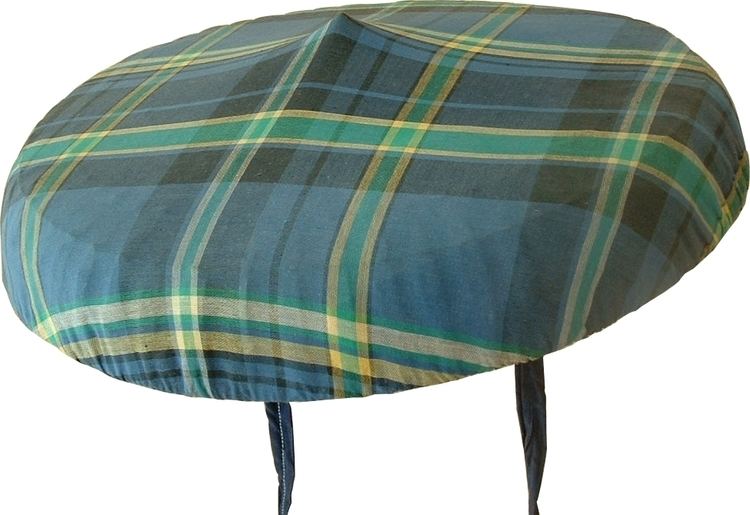 | ||
Salako is a hat from Îles des Saintes (French Antilles). It appeared towards the end of the 19th century. It is made on Terre-de-Bas Island by some last craftsmen who still have the art and the technics of its making.
Contents
Description
Salako is the traditional headgear of people from les Saintes archipelago. Even if its usage is strongly rarefied, it is still worn by some fishermen for whom it is a perfect working accessory, protecting against the sun and the rain thanks to its wide edges indeformable by the wind. The particular silhouette of this headgear is noticeable by far offshore and helps to identify a Saintoise (traditional boat) from les Saintes islands. The elders of the archipelago also wear it during walks in streets at the sunny hours.
The men having looked for bamboos and wood from pond, cut it and sharpen it to making this headgear with their dexterity and their know-how.
The main structure is formed by fine slats sharped called " pikèt ", joined around a round central piece of wood in cone point, called " the heart ". These slats are tightened and tied up between them by circles of bamboo, called " sèrk ", then rounded off to be fixed in the extremities between two flat strips of bamboo making the circumference, called " sèrk bordaj ".
Only a good sun exposure allows to obtain a good roundness. A delicate meshing of fibers of bamboo, in the method of the weaving of the founds of chairs or rocking chairs, called le won, comes on the main structure and forms the head size.
At the conclusion of this craft work, the needlewomen come on stage and create the dressing of the salako. Traditionally dressed in white fabric for the side exposed to the sun, to limit the heat of the sun and the sky blue for the shaded side (colors of the holy Virgin Mary). It is since the development of the tourism dressed in madras fabric for the business.
The salako does not miss to redo its appearance in the traditional costume of les Saintes islands during the festivities and the representations of the local folklore.
Origin
Nobody can certify with exactness how appeared this headgear in Les Saintes.
Its naming and its shape call back however its Indo-Chinese cousin, the salacco, very likely arrived at Les Saintes towards the end of the 19th century, on the head of naval officer coming back from South-East Asia. Indeed the troop of French marines in Tongkin in 1873, a northern region of Vietnam, wore the salacco, a headgear similar to the salako from les Saintes, but much more flat.
Another hypothesis related by the elders of the archipelago tells that the salako would have made its appearance with the arrival of Indo-Chinese Annameses deported in the penal colonies of les Saintes in 1873, for rebellion to France. Five-year-old condemned persons of hard labor, someone stayed to work in farming on the island of Terre-de-Bas.
Symbolism
Salako is an appropriate element of the representation of les Saintes 's identity . The bank of French overseas departments made the numismatic effigy of the one thousand French franc bill (exchange value of ten new French francs) of French departments of America (Guadeloupe, Martinique, French Guyana), from 1962 till 1972.
He also appears on the coat of arms of the tourism office of Terre-de-Haut island.
